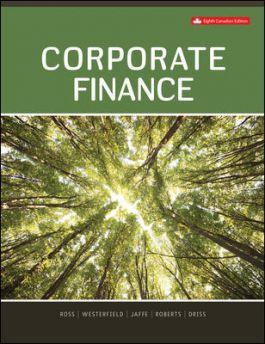Question
n answering the following questions, use the Solow - Swan model of a closed economy without government , described below. The economy has clearing factor

n answering the following questions, use the Solow
-
Swan model of a closed
economy without government
,
described below. The economy has clearing factor
markets (prices adjust to ensure that quantities demanded equal quantities supplied)
.
(i)
Express the production function as a relationship between output per worker,
y
,
and capital per worker,
k
, and calculate the saving rate that would make the
initial capital stock
a steady state. Use a diagram to explain your answer.
(3 marks)
(ii)
If the starting saving rate had been 15% (or 0.15), calculate the initial steady
state levels of
,,
KYC
, and
I
. The saving rate now rises to 25% (or 0.25). Write
the equation of motion of capital per worker and use it to calculate the first year
values of
Y
and
K
in the transition to the new steady state.
(3 marks)
(iii)
Explain, using a diagram, th
e nature of the ?
G
olden
R
ule
?
steady state and
calculate the saving rate at which this occurs in the model given above.
(3 marks)
(iv)
Assume that the current saving rate is 25% (or 0.25). The government adopts
policies to alter sav
ing rate to accord with the ?
G
olden
R
ule? level. Calculate
consumption per worker in these two steady states and compare them. Without
calculating the transition, describe and explain the immediate change that takes
place in consumption per worker and the
subsequent changes. Sketch what you
think the path of consumption per worker in the transition to the ?
G
olden
R
ule?
steady state. Comment on any policy dilemma implied
 2. answering the following questions, use the Solow-Swan model of a closed economy without government, described below. The economy has clearing factor markets (prices adjust to ensure that quantities demanded equal quantities supplied). Output: Y = K L1 Labour supply: 10 s L = Expenditure on GDP: Y = C + I Consumption: C = (1 s)Y Savings: S = sY = Y C where s is the average saving rate (S Y ) and it is constant Investment: I = S Depreciation: K where the parameter values are: Production function: = 0.5 Initial capital stock: 0 K = 40 Depreciation rate: = 0. (i) Express the production function as a relationship between output per worker, y , and capital per worker, k , and calculate the saving rate that would make the initial capital stock a steady state. Use a diagram to explain your answer. (ii) If the starting saving rate had been 15% (or 0.15), calculate the initial steady state levels of K,Y,C , and I . The saving rate now rises to 25% (or 0.25). Write the equation of motion of capital per worker and use it to calculate the first year values of Y and K in the transition to the new steady state. (iii) Explain, using a diagram, the nature of the 'Golden Rule' steady state and calculate the saving rate at which this occurs in the model given above. (iv) Assume that the current saving rate is 25% (or 0.25). The government adopts policies to alter saving rate to accord with the 'Golden Rule' level. Calculate consumption per worker in these two steady states and compare them. Without calculating the transition, describe and explain the immediate change that takes place in consumption per worker and the subsequent changes. Sketch what you think the path of consumption per worker in the transition to the 'Golden Rule' steady state. Comment on any policy dilemma implied
2. answering the following questions, use the Solow-Swan model of a closed economy without government, described below. The economy has clearing factor markets (prices adjust to ensure that quantities demanded equal quantities supplied). Output: Y = K L1 Labour supply: 10 s L = Expenditure on GDP: Y = C + I Consumption: C = (1 s)Y Savings: S = sY = Y C where s is the average saving rate (S Y ) and it is constant Investment: I = S Depreciation: K where the parameter values are: Production function: = 0.5 Initial capital stock: 0 K = 40 Depreciation rate: = 0. (i) Express the production function as a relationship between output per worker, y , and capital per worker, k , and calculate the saving rate that would make the initial capital stock a steady state. Use a diagram to explain your answer. (ii) If the starting saving rate had been 15% (or 0.15), calculate the initial steady state levels of K,Y,C , and I . The saving rate now rises to 25% (or 0.25). Write the equation of motion of capital per worker and use it to calculate the first year values of Y and K in the transition to the new steady state. (iii) Explain, using a diagram, the nature of the 'Golden Rule' steady state and calculate the saving rate at which this occurs in the model given above. (iv) Assume that the current saving rate is 25% (or 0.25). The government adopts policies to alter saving rate to accord with the 'Golden Rule' level. Calculate consumption per worker in these two steady states and compare them. Without calculating the transition, describe and explain the immediate change that takes place in consumption per worker and the subsequent changes. Sketch what you think the path of consumption per worker in the transition to the 'Golden Rule' steady state. Comment on any policy dilemma implied Step by Step Solution
There are 3 Steps involved in it
Step: 1

Get Instant Access to Expert-Tailored Solutions
See step-by-step solutions with expert insights and AI powered tools for academic success
Step: 2

Step: 3

Ace Your Homework with AI
Get the answers you need in no time with our AI-driven, step-by-step assistance
Get Started


